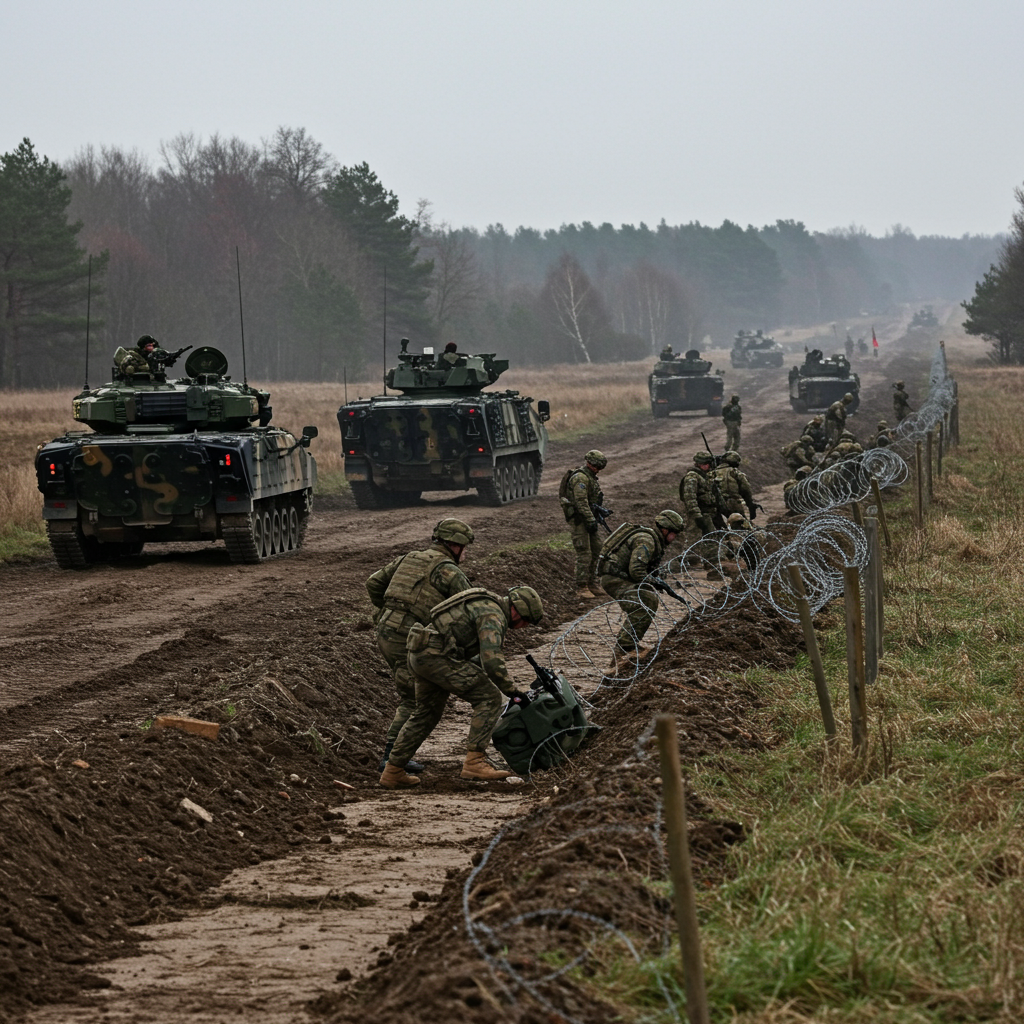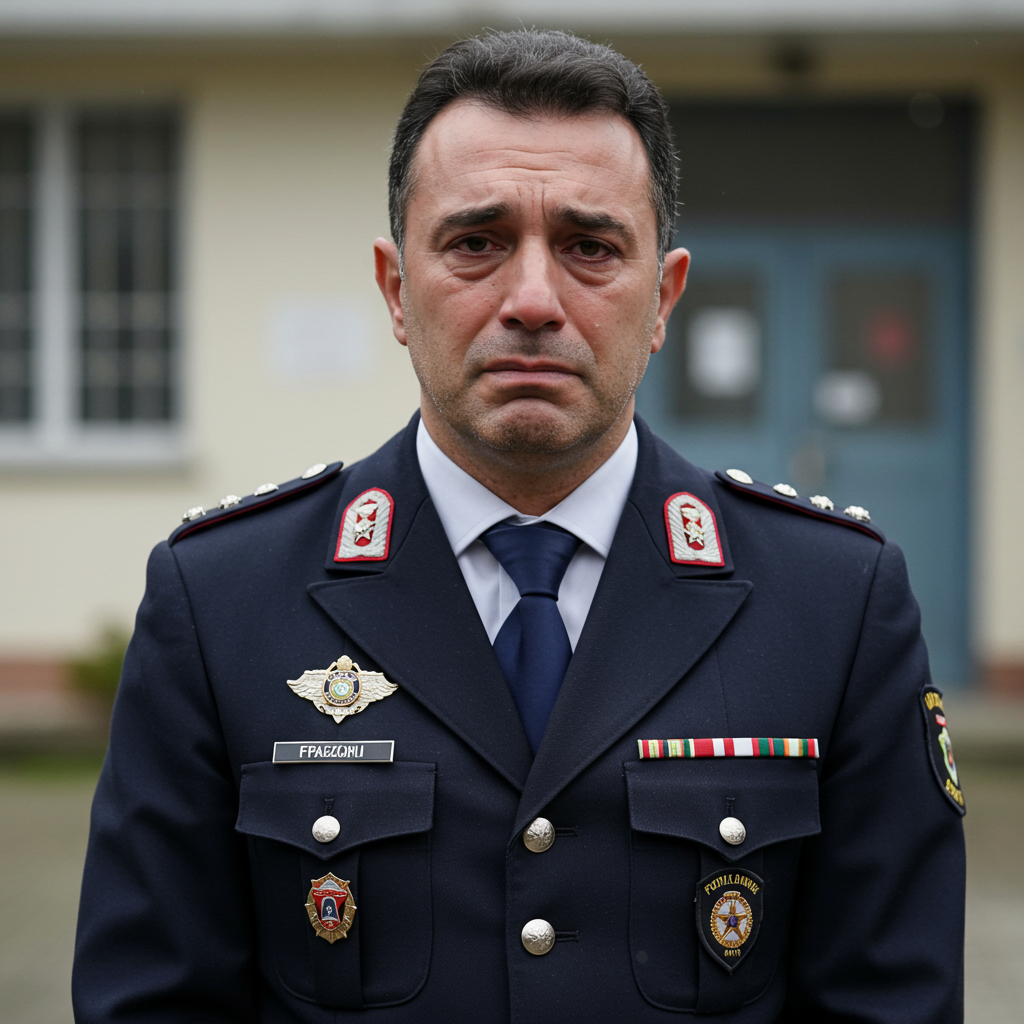An unprecedented incursion of Russian drones into Polish airspace has triggered a significant and unified response from NATO, dramatically escalating tensions on Europe’s eastern flank. This critical incident, marking the most serious violation of NATO airspace since Russia’s full-scale invasion of Ukraine in February 2022, prompted immediate and decisive action from Warsaw and its allies. The collective move to reinforce NATO eastern flank defenses underscores a firm commitment to collective security and sends a clear message against perceived Russian intimidation. The situation highlights the urgent need for robust air defense strategies and continuous vigilance across the region.
The Drone Incursion: A Breach of Polish Skies
The crisis unfolded during a period of intense Russian aerial assaults on Ukraine. In the early hours of a recent Wednesday, Russian drone incursions saw at least 19 unmanned aerial vehicles (UAVs) breach Poland airspace. Polish authorities swiftly activated their air defense systems, successfully shooting down several drones. While initial reports confirmed three to four drones downed, debris from a total of 15 drones, including Iranian-made “Shaheds,” was later recovered across multiple Polish regions. These discoveries, with some found deep within western and southern Poland, indicated a significant depth of penetration.
A Timeline of Escalation and Immediate Response
The sheer scale of this Poland airspace violation set it apart from previous isolated incidents. Polish Prime Minister Donald Tusk described the event as bringing Poland “the closest we have been to open conflict since World War Two.” The incursions forced temporary closures of four airports, including Warsaw’s main Chopin hub, causing widespread flight disruptions. Despite the severe nature of the event, no injuries or fatalities were reported in Poland, though property damage did occur. Poland’s military responded decisively, deploying a comprehensive air defense strategy. F-35, F-16, MI-24, MI-17, and Black Hawk helicopters were dispatched, while ground-based air defense and radar reconnaissance systems were placed on maximum alert. This swift, coordinated response showcased Poland’s readiness and the integrated nature of NATO eastern flank defenses.
NATO’s United Front: Reinforcing Security
In the immediate aftermath, Poland took the grave step of invoking Article 4 of the North Atlantic Treaty Organization. This move, which calls for consultations among members when any party’s territorial integrity, political independence, or security is threatened, signaled the severe nature of the European security escalation. While not triggering Article 5 (collective self-defense), the invocation of Article 4 underscored a grave concern and the need for a unified alliance response. NATO Secretary General Mark Rutte strongly condemned Russia’s “reckless behavior,” reaffirming the alliance’s capability to defend “every inch” of its territory.
Allied Commitments and Enhanced Air Defenses
The response from NATO allies was swift and substantial, translating words of solidarity into concrete declarations of support for NATO eastern flank defenses.
Netherlands: Committed air defense systems, including Patriot missile systems and NASAMS missiles, anti-drone measures, and 300 troops. They will also deploy F-35 fighters to Poland to augment NATO air patrols.
Czech Republic: Pledged helicopters and 100 soldiers to support Polish security efforts.
Germany: Announced an intensification of its engagement along NATO’s eastern border and expanded air policing over Poland. Lithuania, a neighboring state, is also set to receive a German brigade and enhanced warnings.
France: President Emmanuel Macron confirmed the deployment of three Rafale fighter jets to help protect Polish airspace, asserting, “We will not yield to Russia’s growing intimidation.”
- United Kingdom: British Defence Secretary John Healey indicated the UK is exploring options to reinforce Poland’s air defenses, having previously contributed Typhoon jets.
- www.bbc.com
- www.newsweek.com
- www.bbc.com
- news.sky.com
- mezha.net
Latvia, another Baltic state, independently announced a week-long closure of its eastern airspace, further demonstrating the heightened regional anxiety and proactive measures being taken. These combined efforts significantly bolster NATO’s eastern flank defenses and deterrence capabilities.
Intent Under Scrutiny: Deliberate Provocation or Accidental Overflight?
The critical question of Moscow’s intent behind the drone incursion remains a point of contention. While some experts acknowledge it’s not definitively known whether the act was intentional, many Polish and European leaders strongly believe it was a deliberate provocation. Polish President Karol Nawrocki echoed sentiments from his German and French counterparts, stating the incursion was “nothing more than an attempt to test our capabilities.” Polish Prime Minister Tusk called it a “large-scale provocation,” while Foreign Minister Radosław Sikorski dismissed Russian denials as “predictable disinformation” and “default Soviet responses,” citing the unprecedented scale as ruling out technical errors.
Zapad 2025: Heightened Regional Anxiety
Russia, through its foreign ministry, denied any intention to strike Polish territory, dismissing the accusations as “myths” fabricated to inflame the conflict. However, the timing of the drone incident, coupled with the impending “Zapad 2025” joint military exercises between Belarus and Russia, amplified regional anxiety. These drills, which involve thousands of troops, are considered “very aggressive” by Poland, prompting Warsaw to close its border with Belarus for national security reasons. Russia, in turn, urged Poland to reopen the border, warning of “serious damage” to businesses and freedom of movement. The previous Zapad drills, staged months before the full-scale invasion of Ukraine, involved around 200,000 troops, adding a historical context of concern to this year’s maneuvers.
Broader Implications: An Evolving European Security Landscape
The Russian drone incursion into Poland serves as a stark reminder of the volatile security situation on NATO’s eastern flank and the increasing risks of the war in Ukraine spilling over. Ukraine’s President Volodymyr Zelenskyy seized the opportunity to advocate for a joint European air defense system, an “air shield over Europe,” as a unified response to Russia’s “insolent” behavior. He also offered Ukrainian guidance and training to Western military representatives on fending off Russian aerial attacks, drawing from his country’s extensive, near-nightly experience.
This incident has intensified scrutiny of Russia’s strategic intentions and solidified calls for stronger NATO eastern flank defenses. The concept of a “drone wall” for EU and NATO defense, aligning with ideas previously discussed by European leaders, gains new urgency. While the US response from President Donald Trump was initially muted, Polish President Nawrocki reported a consultative call with his US counterpart, reaffirming unity among allies. The long-standing US military presence in Poland, including missile defense bases, stands as a critical element of deterrence, ready for swift response to further escalation. The incident underscores a pivotal moment that is expected to shape future NATO defense strategies and capabilities.
Frequently Asked Questions
What specifically triggered NATO’s heightened defense measures in Poland?
NATO’s heightened defense measures in Poland were primarily triggered by an unprecedented incursion of Russian drones into Polish airspace. During a large-scale Russian aerial assault on Ukraine, at least 19 Russian drones breached Polish territory. Polish air defenses actively engaged, shooting down several UAVs, with debris from 15 drones later found across various regions. This marked the most serious violation of NATO airspace since Russia’s 2022 invasion of Ukraine and led Poland to invoke Article 4 of the NATO treaty, initiating urgent consultations and a robust allied response to fortify its eastern flank.
Which key NATO allies pledged specific military aid to bolster Poland’s air defenses?
Several key NATO allies swiftly pledged specific military aid to bolster Poland’s air defenses following the drone incursion. The Netherlands committed Patriot air defense systems, NASAMS missiles, anti-drone measures, and 300 troops, alongside F-35 fighter jet deployments. The Czech Republic offered helicopters and 100 soldiers. Germany announced increased engagement along NATO’s eastern border and expanded air policing over Poland. France will send three Rafale fighter jets, and the United Kingdom is exploring options to reinforce Poland’s air defenses. Lithuania is also receiving a German brigade, underscoring a broad, unified effort to strengthen NATO eastern flank defenses.
How does this drone incursion fundamentally alter the security outlook for NATO’s eastern flank?
This drone incursion fundamentally alters the security outlook for NATO’s eastern flank by confirming a direct and significant escalation of the Ukraine conflict’s spillover risk into NATO territory. It transforms the theoretical threat into a tangible reality, leading to a proactive and substantial reinforcement of NATO eastern flank defenses. The incident has deepened the alliance’s resolve, accelerating the deployment of advanced air defense systems, fighter jets, and troops. It underscores the critical need for constant vigilance, enhanced intelligence sharing, and potentially a unified European air defense system, redefining deterrence strategies and necessitating a permanent state of readiness against future Russian provocations.
Conclusion
The recent Russian drone incursion into Poland airspace represents a watershed moment for European security. While the immediate threat was contained by Poland’s swift actions and the activation of robust NATO eastern flank defenses, the incident has irrevocably altered the security calculus for the alliance. The unified response, characterized by concrete military aid and a firm stance against Russian aggression, highlights NATO’s unwavering commitment to collective defense. As regional tensions continue to escalate, driven by ongoing conflict in Ukraine and large-scale military exercises like Zapad 2025, vigilance and coordinated defense strategies will remain paramount to safeguard peace and stability across Europe.




